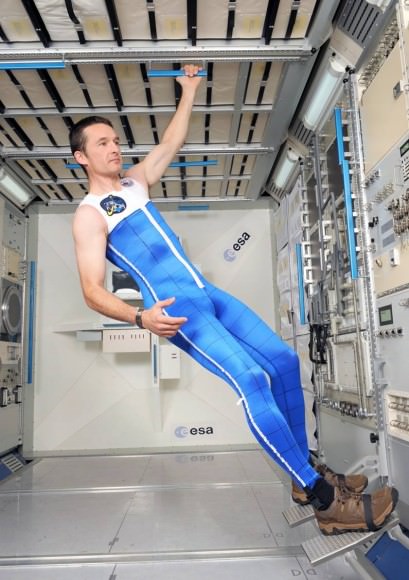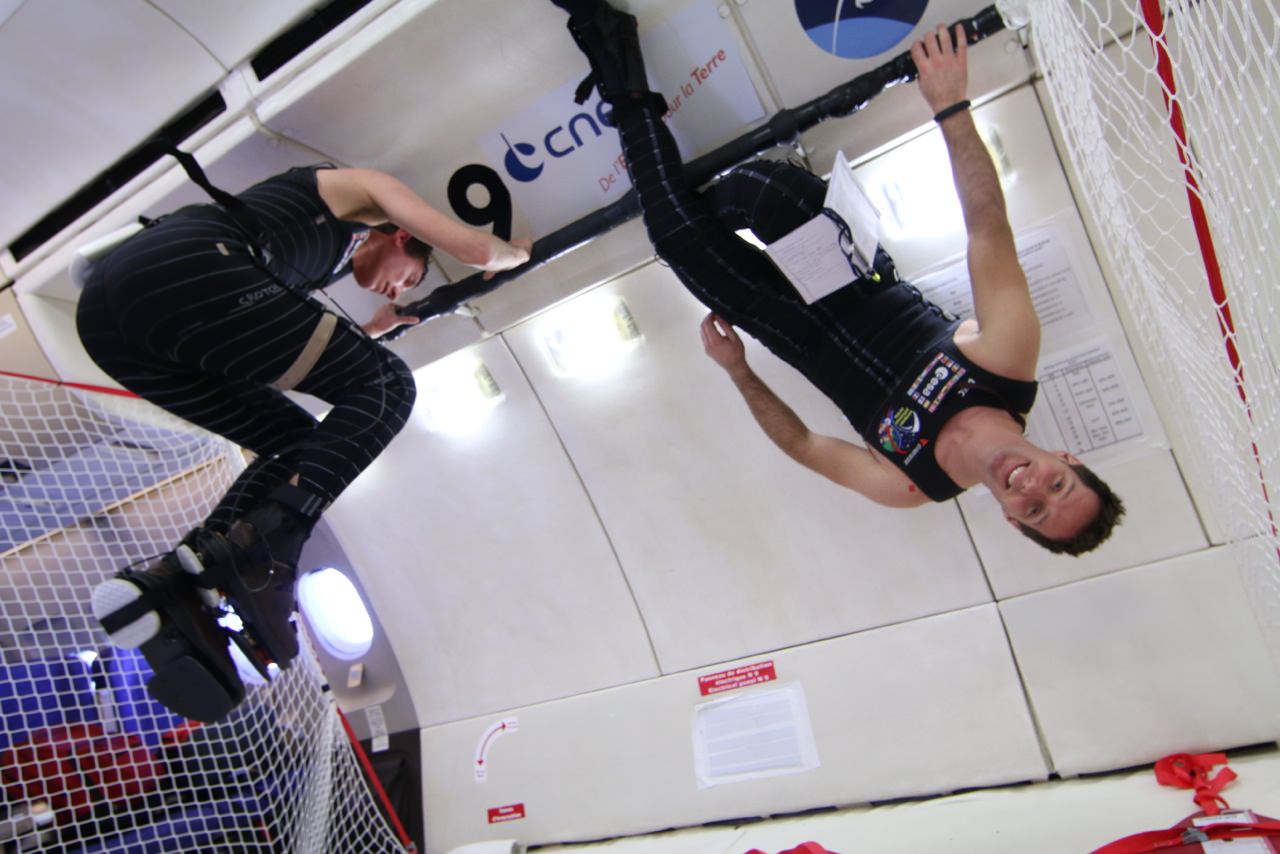If you’ve ever felt insecure about your height, orbit is a great place to be. Astronaut spines lengthen up to 2.75 inches (7 centimeters) while they’re in microgravity. There are big downsides, however. First there’s the backache. Second, you’re four times as likely to get a slipped disc when you return to Earth.
The solution could be as simple as tight clothing. Above you can see French astronaut Thomas Pesquet (already flying high this week after he was publicly named to a flight in 2016) trying out a prototype of the skinsuit. Essentially, it’s so tight that it could prevent you from growing, which in turn would stop the pain and risk of damage.
“The skinsuit is a tailor-made overall with a bi-directional weave specially designed to counteract the lack of gravity by squeezing the body from the shoulders to the feet with a similar force to that felt on Earth. Current prototypes are made of spandex, although new materials are being examined,” the European Space Agency wrote.

The first astronaut to test the suit out in space will be Andreas Mogensen, who will launch to the International Space Station next year.
ESA says if it works, the suit would not only be useful for astronauts, but also could be great for people with back pain on Earth — and possibly, even those with conditions such as cerebral palsy.
Prototypes are being developed between ESA’s Space Medicine Office, King’s College London (United Kingdom), University College London (United Kingdom) and the Massachusetts Institute of Technology (United States).

